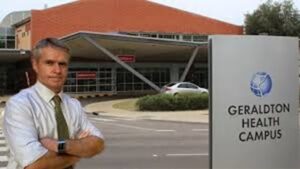By WAFarmers President Tony York
There is a pathway for the State Government to lead us from its controversial and unpopular education cuts impacting student and families in the regions.
It is in the best interest of the state and Perth to encourage population growth in the regions. Not only will this offer a greater range of amenities in the bush to service those already living there, it will also attract new people to regional centres. Additionally, a more balanced approach will also take some pressure off the city and assist in limiting urban sprawl.
As a direct result of the disproportionate population growth and infrastructure roll-out, WA has become a single city state, distorting development and growth towards Perth and away from regions.
Many communities in the Wheatbelt have been enduring population decline for many decades. There are countless communities with smaller populations than 50 years ago. My own town of Tammin had a population peak in the 1930’s and the Moora district probably shares a similar story.
These long running population declines have lasting impacts on us; we have lived through generations of business and service decline, loss of medical and health services, and additional travel to shops for bare necessities (if there is a shop) and of course reduced education services which affects our family units and separates families.
Over time even our vibrant agricultural sector has adapted to how it manages this depopulation. More than necessary, it chooses to invest in less labour dependent sectors. Reducing labour intensive factories and processing plants, which have the effect of less value adding in the regions and more direct export of raw product with for example live exports instead of meat processing.
It is getting tougher holding full time employees because they choose to leave, citing restricted education opportunities for their children; (a frequently given reason) or lack of facilities and amenities, no doctor, no choice!
Farmers have updated their farming practices, less jobs, more machines, less labour intensive industry as OHS requirements can become expensive, while also battling ever increasing minimum wages. Farmers have structured their business to employ single seasonal workers/backpackers such as the New Zealanders who are flown in for three months. These strategies are implemented to reduce the need for permanent labour.
This is a self-fulfilling circle and while there are some regions performing better than others; clearly coastal living regions are less stressed, and the lower South West is recognised as a good place to live as evidenced by its recent population growth. There is a distinct difference of experience for those of us living inland.
Now is the perfect time for the McGowan Government to outline a Regional Development Plan that embraces agriculture. The regions hold many of the answers to the state’s economic woes by way of export of product and investment opportunity. It is important to note that the regions that hold so much prosperity for all Western Australians are the very ones who have had their future hamstrung with education cuts.
A clear Regional Development Plan would provide these communities with an understanding of their value and a belief that they are recognised by their city counterparts, and be valued by the government which has their best interests at heart. The newly developed Department of Primary Industries and Regional Development (DPIRD) is the ideal vehicle to initiate and implement a Regional Development Plan that will attract people and investment to the bush once more.
It is Minister MacTiernan who can take the lead here, and steer her government and department into creating a policy that will genuinely benefit regional communities. People living in the regions would welcome being assured that State Government initiatives have been assessed on their regional development impacts with an appropriate budget allocation. It is hoped that this machinery of government change will foster collaboration between departments to ensure that regional towns attract the best possible outcome, and are treated as a priority.
At times, it is difficult to travel to Perth to see the new investment in roads, hospitals, schools and other key infrastructure, while those in the bush are still using facilities than may be well over 50 years old. A Regional Development Plan will go a long way to ensuring that those living in the bush are not feeling as being treated as secondary to those living in the city.
What the regions need is a process that can depoliticise the issue and prevent continuous polarisation in parliament. It’s no good branding it on party political lines. This is what has been happening for much of the past and has not solved the disparity of development that has created this regionally held sense of divide between country and city.










